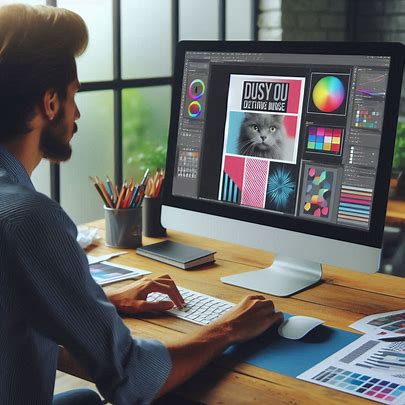
Every great marketing campaign starts with a compelling visual. Whether it’s a bold poster, a sleek brochure, or eye-catching signage, graphic designers play a crucial role in transforming digital concepts into tangible prints that leave a lasting impression.
Print services bridge the gap between digital creativity and physical branding. Companies like Industri Designs help designers bring their ideas to life through high-quality banners, step-and-repeat backdrops, and other marketing materials. Transitioning from a digital file to a physical product requires precision, collaboration, and understanding of print techniques.
The Role of Print in Graphic Design
Despite the dominance of digital media, print remains a powerful marketing tool. Flyers, posters, business cards, and large-format prints offer a tactile experience that digital ads can’t replicate. Print materials also establish credibility and reinforce branding in ways that stand out from online noise.
Graphic designers must consider resolution, color accuracy, and material quality when preparing digital files for print. A perfect design on a screen may not translate well to paper or fabric without adjustments. Understanding these nuances ensures that the final product meets expectations.
Designing for Print: Key Considerations
Color Accuracy and Resolution
One of the biggest challenges in print design is achieving accurate colors. Digital screens display colors in RGB (Red, Green, Blue), while printers use CMYK (Cyan, Magenta, Yellow, Black) inks. This difference means designers must convert their files and make necessary adjustments to maintain color consistency.
Resolution is another critical factor. Digital images need at least 300 DPI (dots per inch) for high-quality printing. Anything lower can result in blurry or pixelated prints.
Material Selection
Paper type, texture, and finish affect the final look of printed materials. Glossy paper enhances vibrancy, while matte finishes provide a sophisticated feel. For banners and signage, durable materials like vinyl ensure longevity, especially for outdoor use.
Typography and Readability
Fonts that work well on screens may not be ideal for print. Designers must choose typefaces that remain legible in various sizes. Additionally, proper spacing and alignment contribute to a polished, professional appearance.
The Collaboration Between Designers and Print Services
Successful print projects require clear communication between designers and printing services. Designers provide detailed specifications, including dimensions, bleeds, and crop marks, while print experts advise on the best materials and finishes for the job.
Proofing is a crucial step. A test print allows designers to catch errors and make adjustments before final production. This step prevents costly mistakes and ensures the final product meets quality standards.
Why Print Still Matters in Marketing
Even in the digital age, print materials remain a cornerstone of branding. Business cards offer a personal touch, posters grab attention in public spaces, and brochures provide tangible information that customers can refer to.
Physical prints also create a sense of permanence. Unlike digital ads that disappear with a scroll, printed materials remain in offices, storefronts, and event spaces, continuously reinforcing a brand’s message.
READ ALSO: Sustainable Design: The New Priority
Bringing Ideas to Life with Print
The process of turning a digital concept into a printed masterpiece requires skill, attention to detail, and the right print partner. By mastering print design principles and working with professional printing services, graphic designers can ensure their creations leave a lasting impact.
